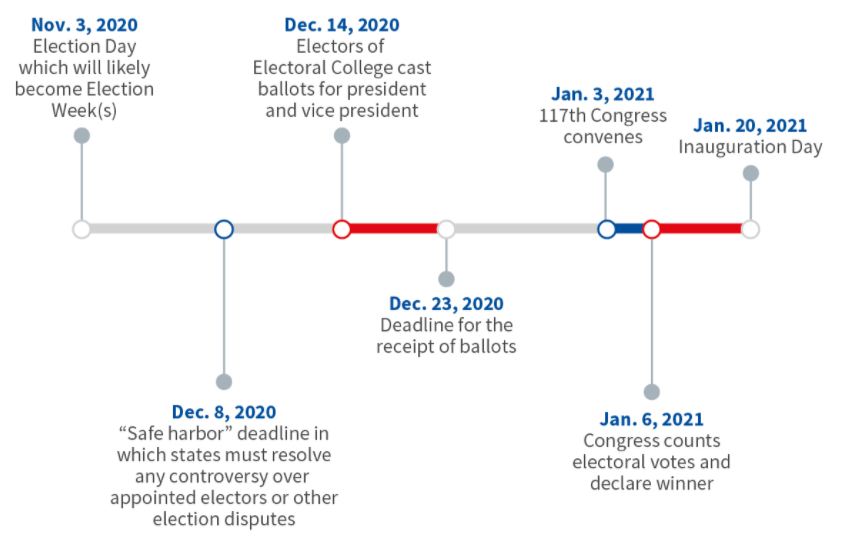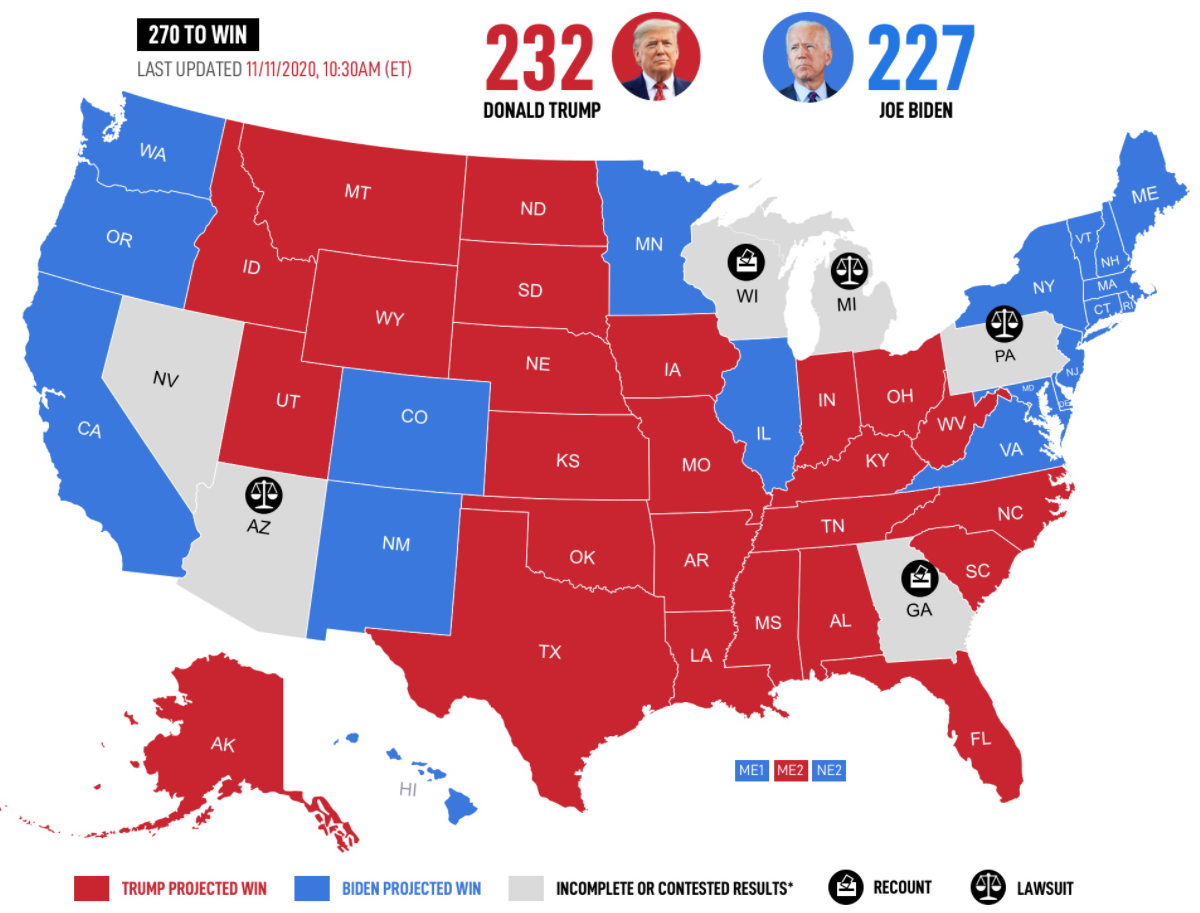Subsequently, we now witness a media blackout, aided and abetted by social media censorship suppressing the public from hearing the magnitude of just how the first US Presidential “mail-in ballot” election was “gamed”.
The situation has become so manipulated that it is no longer about who won an election race,
but now critically more importantly whether the US electoral process is actually fair and just?
I will briefly lay out factually where the problems have been discovered, but first let me explain how our brilliant Constitutional forefathers prevented US elections from being stolen through possible nefarious means. Rigged elections is an old game that our Constitutional Framers gave a lot of consideration to.
THE RULE OF LAW
Everyone needs appreciate how our election process works through state and federal law, not media reporting. The media cannot, nor does decide who wins. The media can simply project who they think might win based on vote totals at any given time. Unless a candidate formally concedes prior to December 14th, the election remains in play and follows a structured predetermined electoral process to resolve disputes enabling fairness & justice:
-
- The election occurs in early November.
- Votes are tallied while officials from both parties (Democrat and GOP) are present.
- Provided officials from both parties are present during the vote tallies and there are:
- No credible accusations of fraud.
- No software glitches.
- Then the vote tallies are ratified.
- If the vote margin between winner and loser is 0.5% or smaller, an automatic recount is required.
- If the margin between the winner and loser is larger than 0.5%, but either candidate (or a 3rd candidate for that matter) wants to dispute the results, he or she can pay to have a recount performed. The cost if roughly $3 million per state.
- Once the recount is completed, or if a recount is not necessary, the individual states formally declare the winner on December 14th when they officially cast their electoral college votes for him or her.
- If there is any outstanding disputes at that time, the states legislative body selects the states electoral college “electors’.
- In early January of the next year, the new congress meets to count the electoral college votes and formally declare the winner.
- If there are disputes still outstanding (for example before the Supreme Court) then the House votes on the selection of the President. The vote in House is taken by state NOT by congressman, with each state casting a single vote. For example, currently there are elected congressman that can be grouped into representing 28 Republican and 22 Democrat states in the People’s Congressional House
- The new President is sworn into office on January 20th.
- This is how Presidential elections work in the U.S. under the US Constitution. It would take an act of Congress (Senate & House) to change this.
So where are we in terms of the 2020 Presidential election?
For starters, the races in multiple states (Georgia, Pennsylvania, Nevada, Wisconsin, Michigan, and Arizona) are under litigation or sufficiently close to require mandatory recounts (within a margin of 0.5%). Here is the schedule that must be met without possible exception or delay




